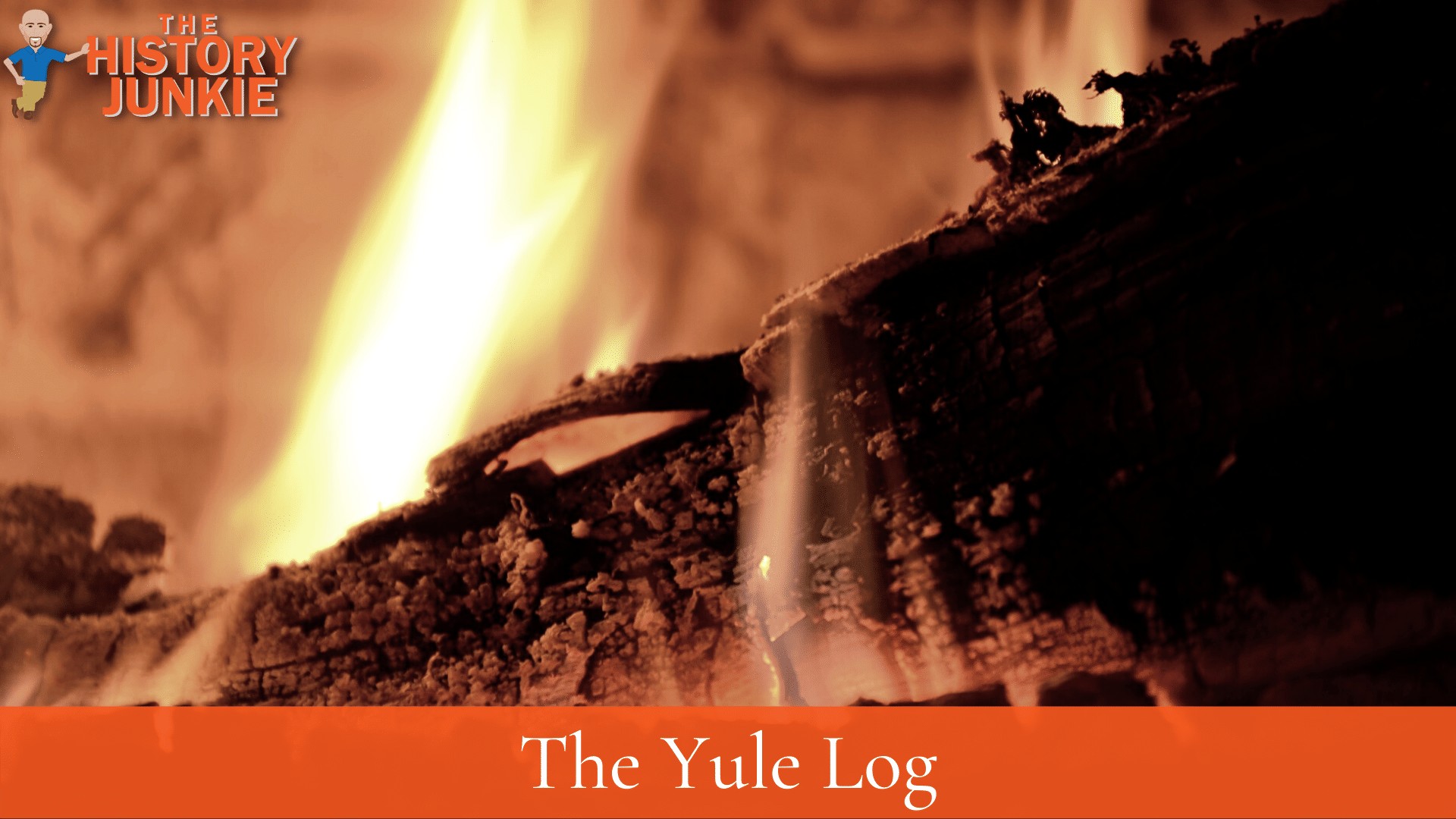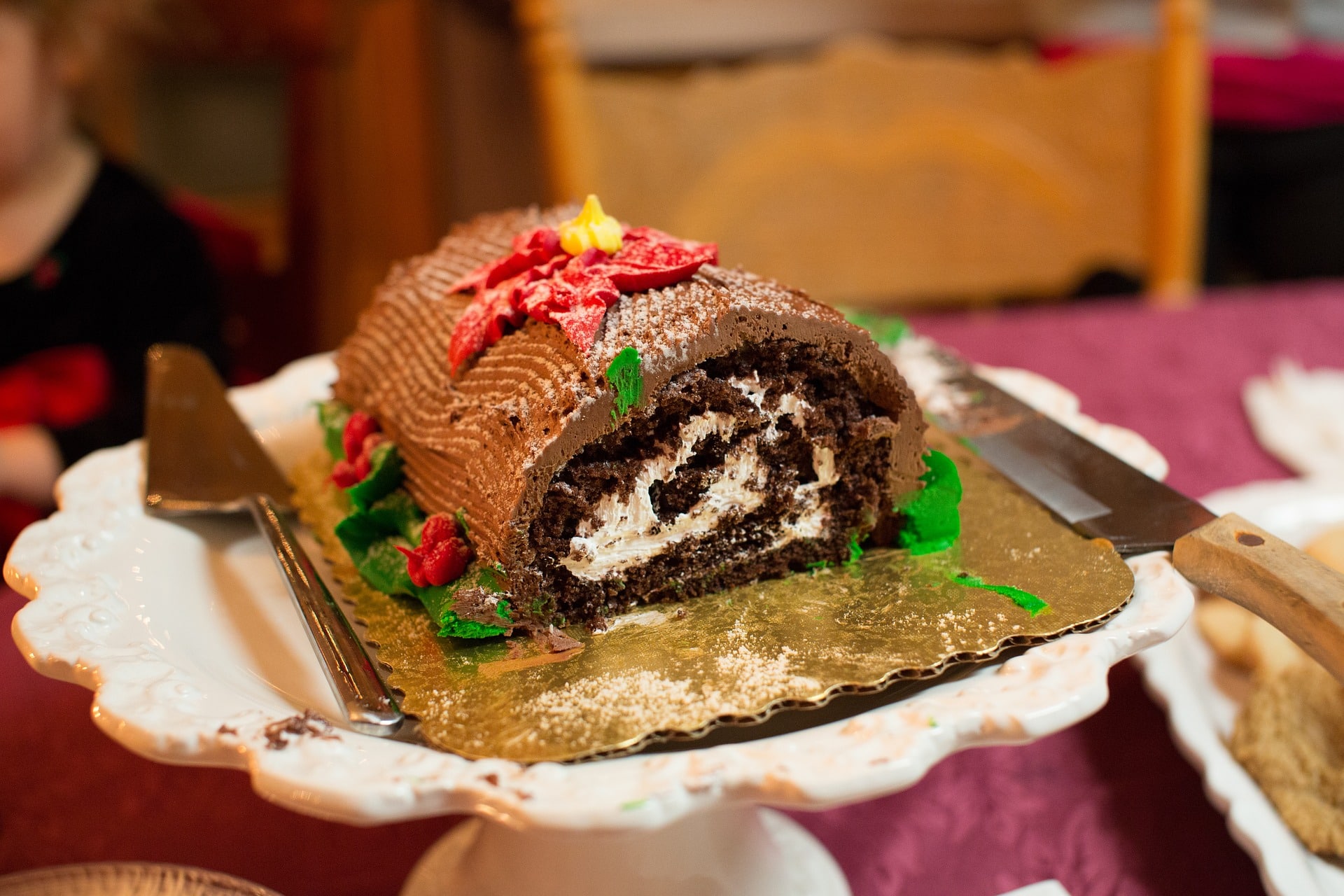Christmas has always resonated with me, and I have enjoyed learning of all the traditions that I never knew about. The Yule Log tradition is one of the most interesting to me, and I am excited to enjoy it this year for the first time (I am writing this in 2021).

The fact that you see the word "Yule" in it suggests that it has something to do with Christmas and that its origins are German.
I would be pretty close, but the origins of this Winter Solstice tradition came from Scandinavia and would spread to other parts of Europe, which would include Germany.
What is a Yule Log?
A Yule Log is ... well ... a log!
Originally, the Yule Log was an entire tree that was burned inside a house. This tree would be slowly fed into the fire throughout the 12 Days of Christmas. This would change as technology advanced, and there would be no need to heat a house with an entire tree.
The traditional still continues but with modifications. Instead of a tree, it is a log, and it is the final log to be burned on the Twelfth night of Christmas. However, every region has its own tradition and handles it a bit differently. This would include America. The Yule Log was and still is popular in Appalachia.
Tom Larson gives an interesting history that details the Yule Log tradition in different regions along with how it became a Christian tradition, although its origins were pagan:
At first, burning a Yule log was a celebration of the winter solstice. In Scandinavia, Yule ran from several weeks before the winter solstice to a couple of weeks after. This was the darkest time of year, and the people celebrated because days would start getting longer after the solstice. There was quite a bit of ritual and ceremony tied to the Yule log, for it marked the sun's rebirth from its southern reaches. The Yule log gets its name from the Scandinavian tradition, but the ritual burning of a special log during winter solstice took place as far west as Ireland, as far south as Greece, and as far north as Siberia.
In the fourth century AD, When Pope Julius I decided to celebrate Christmas around the Winter Solstice, the Yule log tradition continued, but the fire came to represent the light of the Savior instead of the light of the Sun.
On or about Christmas Eve, a big log was brought into a home or large hall. Songs were sung, and stories told. Children danced. Offerings of food and wine and decorations were placed upon it. Personal faults, mistakes, and bad choices were burned in the flame so everyone's new year would start with a clean slate. The log was never allowed to burn completely. A bit was kept in the house to start next year's log. The log brought good luck. Any pieces that were kept protected a house from fire, lightning, or hail. Ashes of the log would be placed in wells to keep the water good. Ashes were also placed at the roots of fruit trees and vines to help them bear a good harvest.
The log also predicted bad luck. If the fire went out before the night was through, tragedy would strike the home in the coming year. If its flame casts someone's shadow without a head, supposedly, that person would die within the year.
The burning of the Yule log marked the beginning of Christmas celebrations. In Appalachia, as long as the log, or "backstick," burned, you could celebrate. Often, a very large "backstick" was chosen and soaked in a stream to ensure a nice long celebration. In the early nineteenth century, American slaves didn't have to work as long as the Yule log burned, so they would choose the biggest, greenest log they could find. If they did have to work while it burned, their master had to pay them for the work.
In England, the log was supposed to burn for the twelve days of Christmas, from Christmas Eve on December 24th to Epiphany on January 6th. Some English Yule logs were large enough that a team of horses was required to drag them to the castle or manor. Some English preferred a log from an ash tree. In the Slavic and other countries, oak was the wood of choice. Almost everywhere, the fire was started with that bit of last year's log to symbolize continuity and the eternal light of heaven.
In some parts of France, a special carol was sung when the log was brought into the home. The Carol prayed for the health and fertility of mothers, nanny-goats, ewes and an abundant harvest. Of course, the French were probably the first to eat their yule logs. They started out burning them like everyone else, but when big open fireplaces began to disappear in France, they moved the tradition to the table by making a cake roll that looked like a Yule log, called a "Buche de Noel."
The Buche de Noel
Many of you, including me, have probably not seen an actual Yule log or participated in the tradition. However, many have probably seen the dessert.

I have seen this dessert at parties and bakeries around Christmas throughout my life, and it is delicious.
The Boche de Noel began in France and would eventually make its way to America. Now, the dessert is seen more often than the actual Yule Log.
It is a cake shaped like a log and then given Christmas colors as decorations. Cranberries, nuts, and even some will decorate with mushrooms.
While it is not as well known as some of the other traditions such as Christmas Trees, Eggnog, Christmas Carols, Christmas Bells, or Candy Canes, bakeries in America and throughout the world have made this Christmas cake become included in the Yule Log Tradition.
